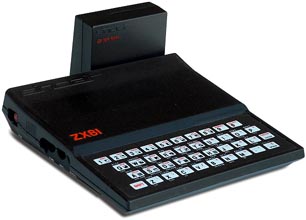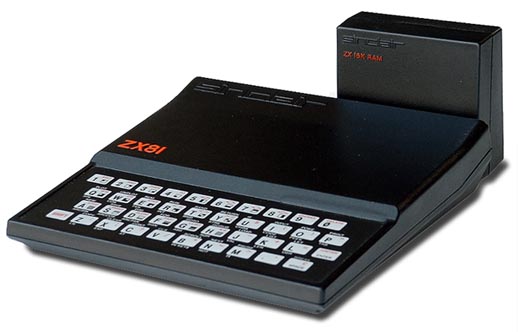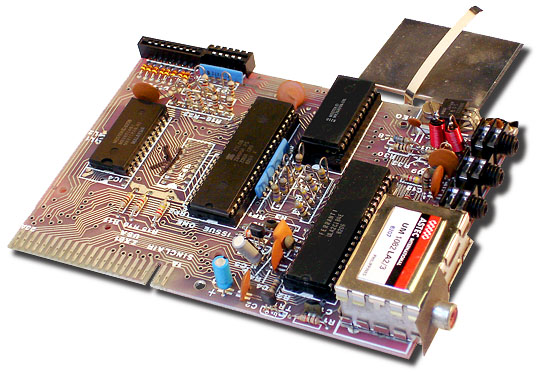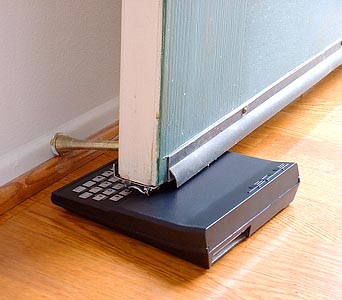|


|

|

One year later, they released the new and improved ZX81. Compared to the ZX80, the ZX81 was much cheaper, at only $99.95, the first computer for under $100. The ZX81 has the same microprocessor and runs at the same speed as the ZX80, but it has a better BASIC programming language and is cheaper to produce, due to having fewer chips and a simpler design.
Although cheap and quite popular, the ZX81 was, well, cheap. The keyboard is a 'touch sensitive membrane', a flexible plastic surface with the actual switches under the surface. While easy to clean and water resistant, it is very difficult and slow to type on, because you have to press hard and very deliberately to use the tiny, closely-spaced keys. Touch-typing is impossible. Resourceful users hacked into their system and added their own 'real' keyboard, external to the system.
There is an expansion port on the back, mostly for memory expansion. 16K memory packs were very popular, although the non-secured edge connection could easily get dirty or come loose, crashing the system and losing your data.
From the Sinclair ZX81 Operating Supplement:
|
Question: "My computer seems to be 'crashing' when I use the 16K RAM module, even though it never does
when I use the computer alone. What can be the problem?"
|
 The video display is your TV, in B&W only, there is no color support.
The video display is your TV, in B&W only, there is no color support.
The computer is composed of only four IC chips, and there are no video chips or co-processors. The CPU has to perform all of the tasks that are required of a computer, which means it executes the BASIC program and updates the screen at the same time, slowing the program speed. The fix? Don't update the display as often - the SLOW and FAST commands determine the video display rate. The FAST command allows the program to run 4X faster, but then the display gets jerky.
 The Sinclair ZX81 is such a slow and difficult to use computer, many people found
that it works better as a door-stop than as a computer...
The Sinclair ZX81 is such a slow and difficult to use computer, many people found
that it works better as a door-stop than as a computer...
In 1982, American company Timex started selling the ZX81 in America, calling it the Timex Sinclair 1000. It was extremely popular, but probably because it cost only $99.95.
|
|
Return to the Obsolete Technology Homepage
This page last updated on 05/08/2016 01:06:08
All logos and trademarks on this site are property of their respective owner.